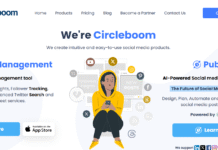Every startup begins with a critical question of timing. Should you build for the future or focus on what works right now? The challenge of startup planning lies in finding the right balance between vision and execution. Some founders devote their energy to the future, analyzing upcoming technologies and distant market trends. Others dedicate all resources to present operations, chasing immediate results. The truth is that neither approach alone is sustainable.
A well-structured startup plan must bridge today’s execution with tomorrow’s possibilities. Vision provides direction and meaning, while execution provides movement and proof. Without this combination, a business either drifts aimlessly or burns out before it matures. Founders who plan only for the future risk never launching, while those who plan only for now may miss opportunities to scale when the time is right.
The world of entrepreneurship changes faster than ever. Market trends, consumer behavior, and funding opportunities evolve constantly. In this dynamic landscape, static plans lose relevance within months. Startup planning must therefore be dynamic, responsive, and data driven.
Founders should treat planning as an ongoing discipline rather than a one-time event. Building a startup today means balancing strategic forecasting with tactical action. Every decision should connect current actions to future outcomes. This article explores practical ways to plan your startup across both time horizons, helping you build a foundation that is adaptable, measurable, and growth oriented.
1. Understanding the Dual Nature of Startup Planning
Short Term Execution
Every successful business starts with execution. The first step of startup planning focuses on testing ideas, finding customers, and generating measurable results. Short term plans revolve around concrete actions such as developing a minimum viable product, refining pricing, and reaching early adopters. At this stage, flexibility and speed are more valuable than perfection.
Short term execution allows founders to validate ideas before investing too deeply. It is about learning quickly, adapting fast, and making data guided improvements. This approach helps a startup stay grounded in real market conditions and financial realities.
Long Term Vision
While short term plans handle the immediate, long term vision defines purpose. Visionary startup planning considers where the company will be five or ten years from now. It focuses on scaling potential, market influence, and societal impact. Investors and team members are often inspired by a clear, well articulated long term direction.
Having a vision also helps prevent short sighted decisions. It ensures that every tactical move aligns with the greater purpose of the business.
Integrating the Two
The key is to combine both perspectives. Use the short term to fuel the long term, and the long term to guide the short term. Your startup planning process should include daily and quarterly goals connected to annual and strategic ones. The future informs your choices today, while present data shapes how you approach tomorrow.
Real World Example
Consider a small company developing AI based diagnostic software for healthcare. In the short term, they focus on building and testing algorithms and forming partnerships with local clinics. The long term vision might involve a global platform improving patient outcomes across borders. Both layers of planning coexist and depend on one another.
2. The Importance of Timing in Startup Planning
Why Timing Determines Success
Timing is one of the most underestimated elements of startup planning. A brilliant idea launched too early may fail due to low demand, while a similar idea introduced later may flourish. Effective planning helps you understand when the market is ready for your solution.
Founders must observe customer readiness, technological maturity, and industry cycles. Acting at the right moment can multiply results and reduce wasted effort.
Market Trend Awareness
Startup planning requires awareness of both macro and micro trends. Analyzing emerging patterns helps you predict future demand. Research competitors, study customer reviews, and identify gaps in service. Timing is about aligning product readiness with user expectation.
Adaptability in Time
Even the most precise plans will face disruption. Economic shifts, regulatory changes, and new competitors can appear suddenly. A good plan includes flexibility to adjust timelines without losing momentum. Revisiting objectives every quarter keeps your business responsive to change.
Learning from Pioneers
Companies like Netflix, Airbnb, and Tesla succeeded not only because of vision but because of timing. They recognized windows of opportunity before the rest of the market reacted. This balance of readiness and foresight is what modern startup planning should achieve.
3. Building Agility into Your Startup Plan
Why Flexibility Is Essential
Startups operate in uncertain environments. A rigid plan may look organized but often collapses when reality diverges from expectations. Agility is therefore a fundamental principle of modern startup planning. It allows companies to adjust strategy based on feedback and new information.
Continuous Iteration
Planning should never stop after launch. Use short development cycles where teams plan, execute, test, and learn. Each iteration strengthens the business and sharpens understanding of customer needs. The faster the feedback loop, the better your ability to stay relevant.
Scenario Planning
Another tool for agility is scenario planning. Build multiple potential pathways for your startup’s growth. Imagine best case, worst case, and most likely outcomes. Prepare action plans for each. This proactive mindset reduces risk and boosts confidence during uncertainty.
Empowering the Team
Agility is not only structural but cultural. Encourage every team member to contribute insights and improvements. A transparent environment where feedback is valued allows faster reaction to change. When planning is shared, the organization becomes more resilient.
4. Validating the Market Before Expanding the Vision
Validation Before Expansion
No matter how bold your idea is, it must be tested. Market validation confirms that a real audience exists for your product or service. Without it, long term planning is speculation. Every phase of startup planning should include methods to verify assumptions through customer interaction and market testing.
Tools and Methods
Use surveys, focus groups, and prototype testing to collect data. Digital channels make validation faster than ever. For example, releasing a pilot product or waiting list can reveal demand levels. Early feedback prevents expensive mistakes later.
Lean Thinking
Adopting a lean mindset means planning around learning rather than predicting. Instead of drafting complex roadmaps, define small milestones and validate each step. This keeps your strategy evidence based and customer centered.
Avoiding Analysis Paralysis
Over planning can be as dangerous as under planning. Spending months on forecasts without testing the idea wastes resources. True validation happens through action. Start small, measure, adjust, and grow progressively.
5. Financial Planning for Stability and Growth
Managing Present Cash Flow
Financial control is the backbone of survival. Immediate startup planning should prioritize stable cash flow. Track income, expenses, and operational costs meticulously. A positive cash cycle allows consistent growth without overreliance on external funding.
Preparing for Future Investment
While focusing on the present, always consider future capital needs. Plan funding rounds in alignment with business milestones. Investors are more attracted to founders who understand their numbers and can connect today’s performance with tomorrow’s potential.
Designing Sustainable Budgets
A sustainable budget reflects both immediate priorities and future objectives. Allocate resources for research, innovation, and marketing while maintaining reserves for emergencies. This balanced approach helps startups scale responsibly.
Fundraising with Strategy
Fundraising is not only about obtaining money but also about timing and storytelling. Raise funds when you have data to support your narrative. Use realistic projections rather than speculative ones. Financial planning becomes a bridge between the current state and future vision of the company.
6. Insights Driven Decision Making
Data as a Foundation
Modern startup planning relies on insights drawn from reliable data. Decisions supported by analytics are more accurate and defendable. Track performance metrics such as customer acquisition cost, retention rate, and conversion funnel. These indicators show whether the business is moving in the right direction.
Integrating Insights into Strategy
Use insights to refine not only marketing but also product design, pricing, and operations. Data transforms planning from guesswork into measurable progress. Founders who interpret trends effectively build stronger business models.
Predictive Analysis
Beyond current data, predictive models help forecast future trends. They reveal which customer segments are most likely to grow and what features might gain popularity. Incorporating predictive insights strengthens your strategic vision.
Continuous Learning Culture
A culture that values insight over assumption evolves faster. Encourage experimentation and knowledge sharing within the team. This keeps planning grounded and adaptive.
7. Technology as the Bridge Between Present and Future
Adopting Scalable Tools
Technology plays a critical role in startup planning because it connects what you are building today with what you envision tomorrow. Scalable tools allow startups to grow without rebuilding their entire infrastructure. Cloud computing, automation platforms, and digital collaboration tools make it possible to operate efficiently and expand globally with minimal friction.
Leveraging Automation
Automation is not just about cutting costs; it is about freeing time for strategic thinking. Automating repetitive processes like billing, data entry, and reporting allows founders to focus on innovation and growth. Strategic use of automation improves both short term performance and long term competitiveness.
Investing in Data Infrastructure
Startups that collect and analyze data from the beginning gain a long term advantage. Data driven startup planning relies on organized, accurate information to make smarter decisions. Setting up analytics systems early ensures that every marketing campaign and product update is based on facts rather than assumptions.
Staying Ahead Technologically
Technology evolves quickly. Continuous learning and early adoption of new tools help your startup remain relevant. Monitor advancements in artificial intelligence, blockchain, and sustainability tech. The companies that integrate new systems responsibly will shape the markets of the future.
8. Building a Team That Balances Vision and Execution
Hiring for Adaptability
People are the foundation of every plan. Hiring adaptable talent is crucial for dynamic startup planning. The best team members can shift from problem solving to creative ideation effortlessly. They understand the importance of deadlines without losing sight of long term purpose.
Creating Alignment
Every employee must understand how their daily tasks contribute to the company’s mission. Clear communication ensures that vision and execution work hand in hand. Aligning personal goals with company objectives keeps motivation high and reduces friction between teams.
Encouraging Ownership
Encourage employees to take ownership of projects. A sense of responsibility transforms passive workers into proactive innovators. Shared accountability also creates a feedback rich environment, which strengthens the startup’s ability to learn and evolve.
Leadership with Balance
Leaders must model balance themselves. Founders who stay grounded while articulating a clear vision build trust. Leadership should involve both strategic foresight and operational presence, ensuring that the startup remains both visionary and disciplined.
9. Marketing Strategies for Now and the Future
Short Term Marketing Wins
In the early stage, marketing should be direct, measurable, and budget friendly. Focus on digital campaigns, community engagement, and content that builds awareness. Short term marketing provides data and insights that shape the long term brand strategy.
Long Term Brand Building
While immediate marketing drives sales, brand building creates lasting recognition. Your brand’s story, tone, and values must align with the larger mission. Strong branding turns customers into advocates who follow your growth over time.
Data Guided Marketing
Modern marketing depends heavily on data. Collecting and analyzing customer behavior ensures that campaigns remain efficient. Data driven startup planning transforms marketing from a creative exercise into a performance oriented discipline.
Balancing Experimentation and Consistency
Experimenting with channels and messages is vital for innovation. However, maintaining consistency in brand identity ensures credibility. A balanced marketing approach keeps your business visible and trustworthy as it grows.
10. The Role of Customer Feedback in Strategic Growth
Why Feedback Matters
Customer feedback bridges the gap between planning and execution. It reveals whether your assumptions align with real user needs. Listening to customers is not a one time event but a continuous process embedded in startup planning.
Systems for Collecting Feedback
Use digital surveys, customer interviews, and analytics tools to gather insights. Every feedback channel should have a clear purpose. Integrating these systems early helps refine your product and customer experience.
Turning Feedback into Strategy
Feedback must lead to action. Analyze comments, identify patterns, and implement meaningful changes. Startups that act on feedback build loyalty and create products that evolve with their users.
Feedback as a Competitive Edge
Customer-centric startups outperform competitors because they adapt faster. By embedding feedback loops into operations, you ensure your plans remain relevant and resilient.
11. Risk Management in Startup Planning
Identifying Core Risks
Every startup faces risks related to market changes, funding, technology, or competition. Effective startup planning involves mapping these risks early. This helps prioritize actions and avoid sudden crises.
Mitigation Strategies
Risk mitigation requires both prevention and response planning. Create contingency budgets, diversify suppliers, and maintain flexible operations. These measures safeguard the business during uncertainty.
Insurance and Legal Considerations
Protect intellectual property, data privacy, and financial assets. Having proper legal documentation and insurance coverage minimizes exposure to unpredictable events.
Risk as an Opportunity
Some risks carry opportunity. Market disruptions can reveal new customer needs or untapped sectors. Founders who view risk strategically turn volatility into innovation.
12. Scaling Strategically Without Losing Focus
Controlled Growth
Scaling should follow proof of concept. Premature expansion can harm financial stability. Use metrics to confirm readiness before entering new markets. Proper startup planning defines what success looks like at each stage of growth.
Maintaining Culture During Scale
As the team grows, the startup’s culture must remain consistent. Founders should document values and communicate them frequently. Culture continuity ensures that the company’s mission remains intact even as operations expand.
Process Optimization
Scaling increases complexity. Implement clear processes and management systems to maintain efficiency. Technology integration and structured workflows prevent operational chaos.
Monitoring Key Metrics
Use performance indicators such as churn rate, lifetime value, and burn rate to measure the quality of growth. These metrics help determine whether scaling is sustainable or premature.
13. The Global Perspective of Startup Planning
Thinking Beyond Local Markets
Globalization offers startups broader opportunities but also new challenges. Founders should research international regulations, cultural differences, and language barriers before expanding. Global startup planning requires a deeper understanding of regional dynamics.
Building International Partnerships
Partnerships accelerate global entry. Collaborate with local distributors, consultants, or technology partners who understand specific markets. Strong alliances reduce entry costs and improve credibility.
Adapting the Product for Different Regions
Localization is key to international success. Tailor product design, pricing, and messaging to match local expectations. Flexibility in approach allows the same core product to thrive across diverse markets.
Managing Global Operations
Use cloud tools, remote teams, and digital communication platforms to coordinate global operations effectively. Structured management ensures consistency across multiple time zones and cultures.
14. Measuring Progress and Success
Setting Clear KPIs
Define measurable goals that track progress accurately. Startup planning should rely on key performance indicators related to customer satisfaction, revenue growth, and retention.
Reviewing Performance Regularly
Schedule regular performance reviews to evaluate achievements and identify gaps. These sessions keep the team accountable and focused on continuous improvement.
Using Analytics for Growth
Analytics tools reveal what works and what does not. Monitoring metrics across marketing, product, and finance ensures smarter decisions and sustainable growth.
Celebrating Achievements
Recognizing progress boosts morale. Celebrations remind the team of how far they have come and reinforce the culture of persistence.
15. Balancing the Future and the Present
Strategic Patience
Patience is essential in startup planning. Success rarely happens overnight. Founders must stay focused on consistent progress rather than quick wins.
Embracing Adaptation
The balance between the future and now is achieved through adaptation. Learning from mistakes and adjusting direction keeps your startup alive and relevant.
Maintaining Momentum
Momentum comes from small, consistent actions. Every milestone builds credibility and pushes the business closer to its vision.
Staying True to Purpose
Amidst all pivots and plans, remember the core purpose that started the journey. Purpose anchors the business when external factors change.
Conclusion
Building a startup is not a choice between the future and now. It is about combining both with purpose and precision. A founder must envision what lies ahead while acting decisively in the present. Startup planning becomes powerful when vision and execution work in harmony.
Start by understanding your immediate market, validating your idea, and achieving financial stability. At the same time, design scalable systems, define a long term mission, and prepare for technological evolution. The startup that succeeds is the one that treats planning as a continuous, evolving discipline rather than a static document.
Every decision you make today should move you one step closer to the future you want to build. The right balance between present action and future vision ensures that your startup not only survives but thrives, adapting and growing through every stage of its journey.











































